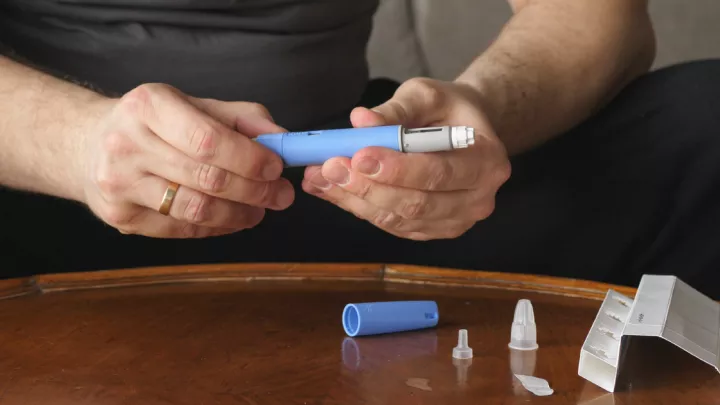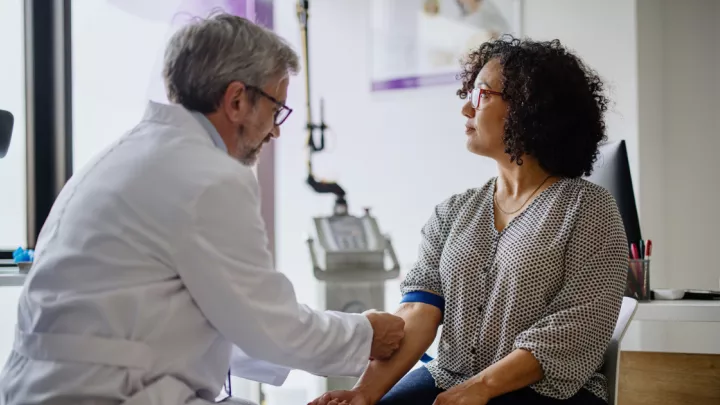When to get your child tested for Type 1 diabetes

Type 1 diabetes is a chronic autoimmune condition in which the body stops producing insulin.
Although there are similarities between Type 1 and Type 2 diabetes, they have very different causes, explains Audrey Lane, MD, an internal medicine pediatrics resident who sees patients at Fontenelle Health Center and was diagnosed with Type 1 diabetes at age 17.
“Because Type 1 diabetes is an autoimmune disorder, the immune system of people with Type 1 diabetes eventually destroys all of the cells that make insulin,” Dr. Lane says. “In Type 2 diabetes, your body can still make insulin – it just can't make as much as you might need.”
Unlike Type 2 diabetes, which usually develops gradually, Type 1 diabetes can appear suddenly and is not caused by diet or lifestyle habits. It's important to be aware of the symptoms associated with Type 1 diabetes and know when to seek testing and care.
Type 1 diabetes symptoms
One of the most common initial symptoms of Type 1 diabetes is frequent urination. If your child suddenly starts urinating more frequently, experiences excessive thirst or loses a significant amount of weight, these could be signs of Type 1 diabetes.
When Type 1 diabetes remains untreated, more serious symptoms begin to occur. These may include:
- Uncontrolled vomiting
- Fast breathing
- Sleepiness
- Irritability
When it comes to symptoms, it’s important to remember that Type 1 diabetes can also affect adults, Dr. Lane says.
“We often think of it as being a kids’ diagnosis because Type 1 diabetes more commonly affects kids,” she says. “However, adults can be diagnosed with Type 1 diabetes, too. So if you have these symptoms, regardless of whether you're a child or an adult, you should be checked out.”
If left untreated, Type 1 diabetes can progress to a life-threatening condition called diabetic ketoacidosis, or DKA. DKA occurs when the body doesn't have enough insulin to break down glucose for energy and starts using fat instead. This leads to the production of ketones, which can build up in the blood and cause a dangerous imbalance. Identifying Type 1 diabetes early and starting treatment promptly can prevent the development of DKA.
Diagnosing Type 1 diabetes
To diagnose Type 1 diabetes and check its progression, health care professionals use a combination of tests. These may include:
- A urine test to check for the presence of glucose.
- A blood glucose test to measure blood sugar levels.
- An HgA1c test to assess long-term blood sugar control.
- A blood gas test to evaluate acid levels.
- A metabolic panel to assess kidney and liver function.
Often, Type 1 diabetes patients are initially hospitalized. They are treated by a multidisciplinary team, including diabetes educators who share individualized guidance for diabetes care. Patients or their caregivers learn how to administer insulin, count carbohydrates and adjust medication accordingly.
To help maintain normal blood sugar levels, individuals may use a continuous glucose monitor and insulin pump. Because Type 1 diabetes is a chronic condition, these individuals will need to manage their diabetes for the rest of their lives.
Finding support
A Type 1 diabetes diagnosis can be isolating, but having a supportive relationship with others facing the same challenges can make a difference. Nonprofit organizations and camps designed for children and young people with Type 1 diabetes can provide valuable support and a sense of community.
With proper management, support and routine medical check-ups, individuals with type 1 diabetes can thrive and pursue their dreams, Dr. Lane says. “People with diabetes live good, normal lives and are very successful. It is a lot of work, and there are challenges, but life is still good.”







